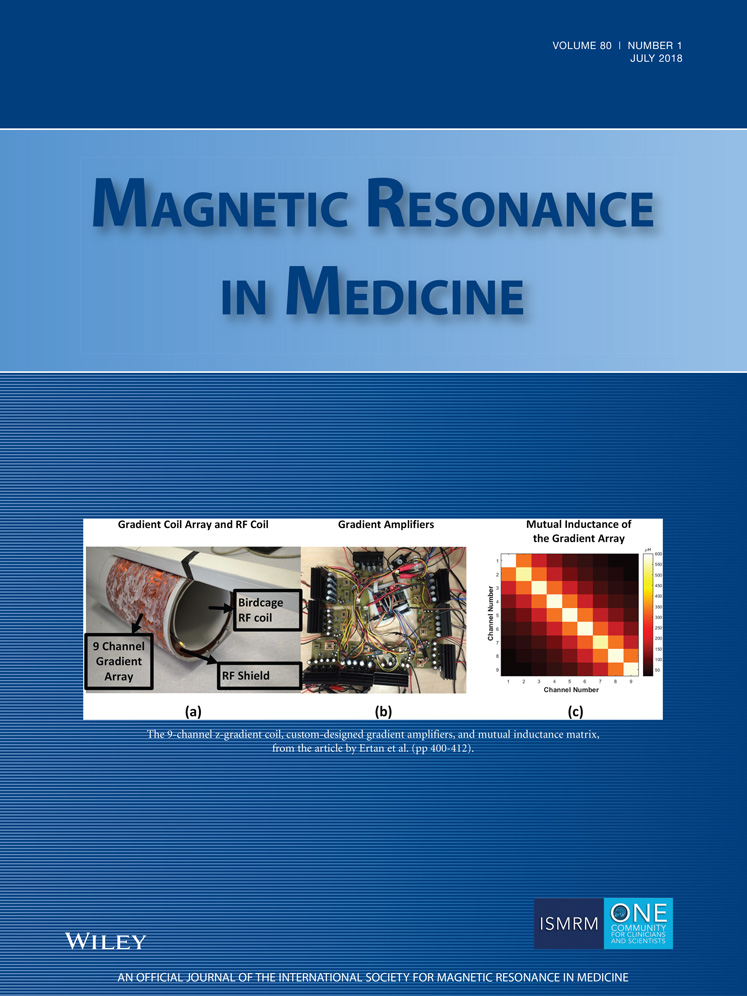Constrained optimization for position calibration of an NMR field camera
Abstract
Purpose
Knowledge of the positions of field probes in an NMR field camera is necessary for monitoring the B0 field. The typical method of estimating these positions is by switching the gradients with known strengths and calculating the positions using the phases of the FIDs. We investigated improving the accuracy of estimating the probe positions and analyzed the effect of inaccurate estimations on field monitoring.
Methods
The field probe positions were estimated by 1) assuming ideal gradient fields, 2) using measured gradient fields (including nonlinearities), and 3) using measured gradient fields with relative position constraints.
The fields measured with the NMR field camera were compared to fields acquired using a dual-echo gradient recalled echo B0 mapping sequence. Comparisons were done for shim fields from second- to fourth-order shim terms.
Results
The position estimation was the most accurate when relative position constraints were used in conjunction with measured (nonlinear) gradient fields. The effect of more accurate position estimates was seen when compared to fields measured using a B0 mapping sequence (up to 10%–15% more accurate for some shim fields).
The models acquired from the field camera are sensitive to noise due to the low number of spatial sample points.
Conclusion
Position estimation of field probes in an NMR camera can be improved using relative position constraints and nonlinear gradient fields. Magn Reson Med 80:380–390, 2018. © 2017 International Society for Magnetic Resonance in Medicine.




